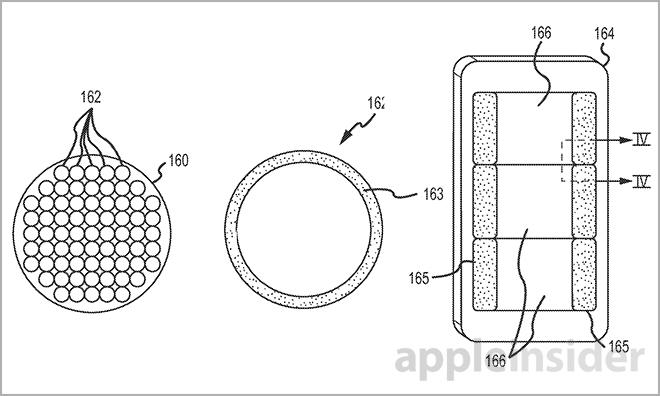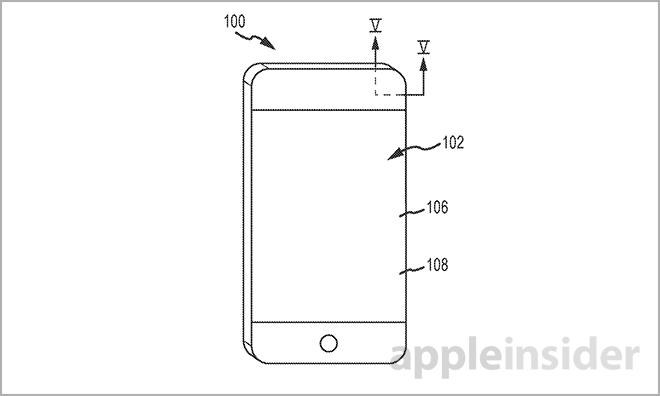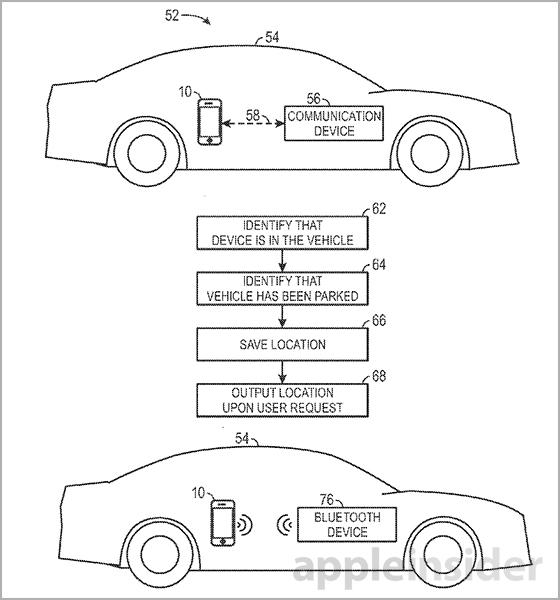Among Apple's 41 patent applications published on Thursday were properties covering sapphire window manufacturing for iPhone displays and camera covers, as well as a method to automatically save the location of a parked car.
Sapphire Windows
The U.S. Patent and Trademark Office published yet another sapphire-related Apple property, this time relating to cutting and processing wafers of the material for use in portable electronics. Although not the focus of the invention, Apple does mention that the sapphire window method can be applied to an iPhone's display. This is one of the first prominent mentions of a sapphire-covered screen to be found in the company's patent filings.
Simply titled "Sapphire Window," Apple's filing describes methods in which the hard material can be grown, harvested into polished wafers, decorated (painted or masked) and cut into discrete windows. As applied to portable electronics, the invention covers camera module covers, like those seen on the iPhone 5 and up, as well as device displays.
As noted in the application, sapphire has yet to see wide use in the consumer electronics industry due in part to the very properties that make it desirable. Since the material is so hard, conventional manufacturing techniques may not be effective in turning out a finished product. Tool wear is also a consideration when using conventional methods of cutting and shaping.
In one embodiment, a laser is used to cut through the sapphire wafer to yield a number of windows to be used in a device assembly. Various techniques are described, including the use of IR and pulse lasers of sufficient power to make clean cuts. Apple notes the use of lasers is both faster and more precise than CNC grinding methods.

From left: Ink masks for discrete windows on a sapphire wafer, enlarged window, alternative wafer cutting.
As for harvesting sapphire, the property explains that the material can be grown and cored to form a core that can then be sliced into workable wafers. This method also includes lapping and polishing the wafers, as well as dicing via laser, to yield discrete windows.
Once the sapphire window is ground, polished, ablated and cut to size, various coatings or decorations may be applied to its surface. For example, ink masking or oleophobic coatings can be layered on one side of the sapphire.
Apple's sapphire window patent application was first filed for in 2012 and credits Christopher D. Prest, Ashutosh Y. Shukla, Dale N. Memering, Vashist Vasanthakumar, Vincent Yan and Thomas Johannessen as its inventors.
Earlier on thursday, documents surfaced relating to Apple's partnership with sapphire manufacturer GT Advanced Technologies. The packet outlined "Project Cascade," an advanced sapphire manufacturing facility in Mesa, Ariz., that Apple is pushing to get online as soon as February.
Vehicle Location System
Apple's "Vehicle location system" describes an easy method for iOS device owners to locate, save and recall the GPS location of a parked car. Unlike a separate property involving Bluetooth beacons, Thursday's publication is straightforward and only requires a GPS-enabled smart device and a Bluetooth-capable car or in-car device.
In some embodiments, a portable device like an iPhone may be programed to communicate with a vehicle via a wired or wireless interface such as Bluetooth. When connected, the device can determine that the user has moved into a car and is ready to drive. This triggers the activation of an on-board GPS, like that found in an iPhone, which tracks car location and motion.
To determine that a user has parked their vehicle, the system analyzes data from the GPS module, accelerometer or direct communication from the car itself. In some embodiments, geofencing or Bluetooth microlocation can be used to detect when a user is no longer near their vehicle.
Once it is determined that the user has parked, the device saves the car's location data for later recall by a mapping or similar application.
While it remains unclear if Apple will roll out such a feature, current iPhones and iPads already boast hardware that can handle many of the patent's implementations. An interesting addition to the filing would be the application of iBeacon technology, which in theory could provide inside/outside vehicle location data instead of a power-hungry GPS module.
The patent application was filed for in 2012 and credits Steven C.Michalske as its inventor.
 Mikey Campbell
Mikey Campbell








-m.jpg)






 Christine McKee
Christine McKee
 Marko Zivkovic
Marko Zivkovic
 Mike Wuerthele
Mike Wuerthele

 Amber Neely
Amber Neely
 Sponsored Content
Sponsored Content
 Wesley Hilliard
Wesley Hilliard










21 Comments
"decorated" seems like an odd word to use. Does it have a particular meaning in this instance?
Looks like an edge to edge display too lol
I wonder what the sapphire would feel like on the fingers as you're swiping, dragging etc? If it feels much nicer than glass, it could make iPhone owners get used to it, and other phones feel bad to them if they try to switch away. It could also be used on the Macbook Pro/Air touchpad.
Ironic. Apple designs glass that can't break but when Microsoft created Windows it was designed to crash.
I wonder what the sapphire would feel like on the fingers as you're swiping, dragging etc? If it feels much nicer than glass, it could make iPhone owners get used to it, and other phones feel bad to them if they try to switch away. It could also be used on the Macbook Pro/Air touchpad.
I think it should feel relatively similar if not a bit smoother, since as far as I can tell, sapphire is even more dense than the gorilla glass being used.